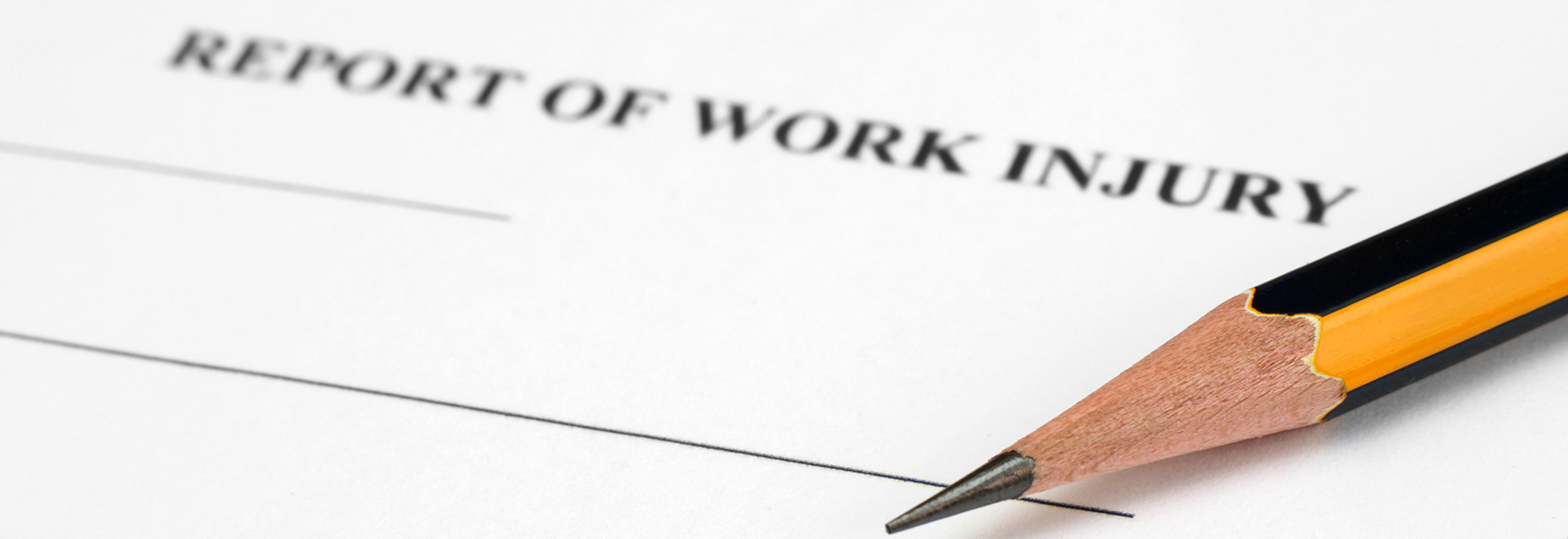Injury Reporting Versus Injury Recording (Part 2 of 2)

Part 1 of this series explained the main differences between “reporting” and “recording” injuries that occur in the work environment. To further clarify an employer’s responsibilities, Part 2 of this series examines definitions and scenarios outlined within the OSHA recordkeeping standards.
One of the more difficult determinations in the recordkeeping process is determining if an incident is a “first aid” case. While medical treatment cases must be recorded on the OSHA 300 Log and the OSHA 301 Summary, first aid cases do not.
The OSHA recordkeeping regulation 1904.7 (b)(5(ii) defines “first aid” as:
- Using a non-prescription medication at a non-prescription strength.
- Administering tetanus immunizations (other vaccines such as Hepatitis B and rabies are considered medical treatment).
- Cleaning, flushing or soaking wounds on the surface of the skin.
- Using wound coverings such as bandages, Band-Aids™, gauze pads, wraps, non-rigid back belts.
- Using hot or cold therapy.
- Using temporary immobilization devices while transporting an accident victim.
- Drilling a fingernail or toenail to relieve pressure or draining fluid from a blister.
- Using eye patches.
- Removing splinters or foreign materials from areas other than the eye by irrigation, tweezers, cotton swabs or other simple means.
- Using finger guards.
- Using massages (physical therapy and chiropractic treatment are considered medical treatment).
- Drinking fluid for relief of heat stress.
There are 11 Standard Interpretations that OSHA has published to clarify the definition of “first aid” but all additional treatments are considered “medical” in nature and therefore recordable.
Another area of confusion for employers is the determination of “work relatedness.” Work relatedness is defined as an injury or illness that occurred in, or a preexisting injury that was aggravated by, the “work environment.”
Below are instances when employers are not required to record an injury or illness:
- At the time of the injury the employee was present in the work environment as part of the general public. (e.g. An employee slips and falls in the parking lot coming into work to pick up her forgotten jacket on her own time.)
- The injury or illness resulted from participation in a voluntary wellness program or exercise class. (e.g. An employee is injured lifting weights in the employer’s fitness studio.)
- The employee was conducting personal tasks during work hours. (e.g. An employee slips and falls entering a bank to cash a check during his paid break time.)
- The injury is caused by a motor vehicle accident that occurs in the company parking lot or access road. (e.g. An employee is injured when he pulls his vehicle into the company parking lot and is struck by another vehicle.)
- An employee injury that occurs in a home office that resulted from inherent hazards in the residence. (e.g. An employee slips and falls down the stairs while going to a basement office.)
There are many other circumstances listed within the OSHA standards and the associated standard interpretations so the employer should consult the regulations in unusual circumstances.
The recording of work related COVID-19 illnesses, and the reporting to OSHA of COVID-19 fatalities, and in-patient hospitalizations is currently a “hot topic” with employers throughout the United States. As with any workplace injury or illness, OSHA recording is required. Employers must record the case on their 300 log, 300A summary and 301A form if it resulted in any care beyond first aid, days away from work, hospitalization, or death.
Determining the work relatedness may be difficult for employers; additional information is available in this OSHA Enforcement Guidance document. COVID-19 hospitalizations and fatalities must be reported to OSHA. There have been many citations issued to employers that have failed to observe the following OSHA requirements:
- First, the employer must determine if the employee contracted the COVID-19 virus in the work environment. The burden of proof lies with the employer to show that the employee was not exposed at work.
- If the employer cannot prove that the employee exposure was outside of the workplace, the in-patient hospitalization or fatality must be reported to OSHA as having occurred in the workplace.
- The reporting must occur within 24 hours after the workplace determination is completed by any of the following means:
- Calling the nearest OSHA office
- Calling the 24-Hour OSHA hotline 1(800)321-OSHA (6742), or
- Submitting the report online by electronic submission.
A third area of recordkeeping concern arises when employee injuries are prolonged.
- OSHA states that if a recordable injury occurred in one year but the resulting restrictions carried over to the next year, the employer only needs to record the injury in the year that the injury occurred.
- The regulations also state that the employer can stop counting the total number of “days away” from work when the total count reaches 180 days.
For more information check OSHA’s Injury and Illness Recordkeeping and Reporting Requirements, or explore the resources in the MEMIC Safety Director.

